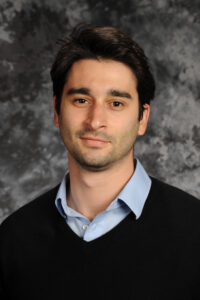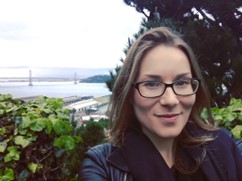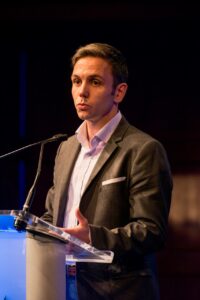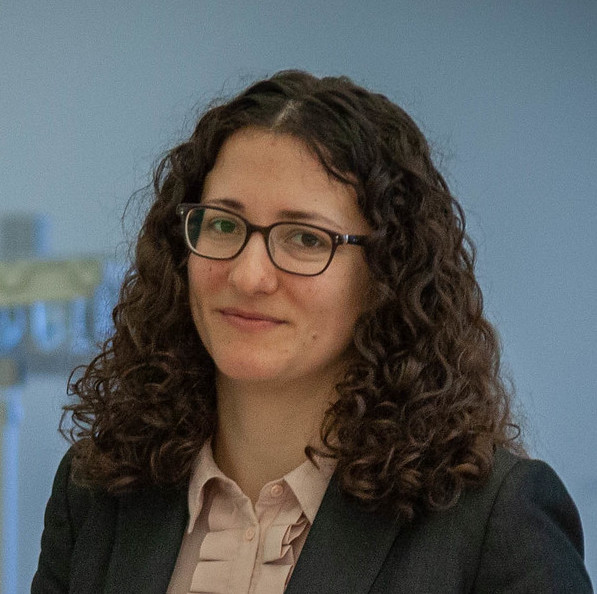by Joanna Giano, Written Communications Assistant
UConn’s team of Mechanical Engineering Graduate students achieved a remarkable victory, securing first place at the national hackathon event hosted by The Computer & Information in Engineering (CIE) Division of the American Society of Mechanical Engineers (ASME). This annual competition featured 34 participants from 18 institutions and took place from August 20 to 23, 2023, at the Boston Park Plaza in Boston, MA.

The dynamic duo of Leidong Xu and Zihan Wang, both PhD students affiliated with Prof. Hongyi Xu’s Computation Design for Manufacturing Laboratory, earned the grand prize of $1,400 for their outstanding performance. The second-place team received $700, while the third-place team received $350.
The ASME-hosted hackathon presented an invaluable opportunity for participants to immerse themselves in the practical applications of data science and machine learning techniques to solve real-world engineering challenges. The primary objective of this competition was to develop realistic textures for solid objects created using computer-aided design (CAD) software. These textures were expected to mimic the behavior of real-world materials like metals and alloys across various scales.
UConn’s triumph at this national event is a testament to the exceptional talent and dedication of its Mechanical Engineering students, showcasing their ability to harness cutting-edge technology to address complex engineering problems. The students and Prof. Xu delved deeper into their journey leading up to and during the hackathon below.
- What were the key challenges you and your team encountered during the hackathon, and how did you overcome them?
The hackathon event has a tight timeframe, and it is a huge challenge for us to develop a complete and polish project. To overcome it, we allocate time wisely and finally get all results done in one week.
- Could you provide insights into the innovative solution you developed for the hackathon challenge?
Zihan and Leidong enhanced an existing system that utilized 2D microstructure images to recreate 3D microstructures that are statistically equivalent. Our advanced framework employs a Transfer Learning model to capture essential features from the granular microstructures of alloys. Notably, we’ve augmented computational efficiency through
parallel computing, which also allows our generated microstructures to be incorporated into intricate 3D volumes like tubes, helical gears, and turbo blades. Our methodology integrates transfer learning via VGG-19, style transfer techniques for texture synthesis, and a multi-GPU parallel approach. Beyond its technical prowess, our framework addresses a crucial design hurdle, bridging the gap between microstructures and designers’ vision seamlessly.
- What lessons or takeaways do you think other aspiring participants can learn from your experience?
With the rapid evolution of machine learning methodologies in recent times, it’s imperative for researchers to first understand the inherent characteristics of their data before selecting an approach. From there, adapting and tweaking existing frameworks or strategies can be pivotal in optimizing results.
- How did your preparation and training beforehand impact your performance during the hackathon?
We are very familiar with the programming and visualization tools we used during the hackathon. Additionally, we possess sufficient expertise in pre-trained deep learning models, image-processing methods, and style transfer techniques. This proficiency greatly expedited our problem-solving process throughout the hackathon.
- Were there any unexpected twists or turns during the competition that forced you to adapt your approach?
With the limited time at hand, we realized that we needed to capitalize on the advantage of using pre-trained deep learning models to tackle the challenge effectively. Initially, we had planned to build our solution from the ground up, training our own models and optimizing them for the specific problem we were addressing. However, given the tight timeframe, this approach would have consumed a substantial portion of our available time. Upon evaluating our situation, we recognized that leveraging pre-trained models could provide us with a significant head start. These models were already trained on vast amounts of data and had learned complex patterns, making them well-suited for our problem as well. This shift in strategy allowed us to save precious time on training and focus more on adapting the model to our specific needs.
- Looking ahead, what are your aspirations or goals in the field of technology and innovation after your victory at the ASME 2023 CIE Hackathon?
Our victory at the ASME 2023 CIE Hackathon has reinforced our drive to further refine and innovate our current framework. We see a multitude of avenues for enhancement. Specifically, we’re eager to develop a fully automated system for image analysis and labeling, which would drastically streamline the process. Another focus is to fine-tune our parallel algorithm to produce microstructure images with even greater resolution. Moreover, in a bid to consolidate our findings and methods, we’re excited about our upcoming collaboration with Sandia National Laboratories. Our joint effort aims to encapsulate our hackathon project into a comprehensive journal paper, sharing our innovations with the broader scientific community.
- How do you envision leveraging the skills and experiences gained from the hackathon in your future projects and endeavors?
IDETC/CIE hackathon is an opportunity to engage with real-world engineering problems, moving beyond academic theory. This setting will allow me to apply my technical knowledge in a practical context, enhancing my understanding of the mission and challenges of national labs and leading industry companies. Participating in the hackathon in a team will serve as an excellent opportunity for honing my teamwork and cooperative abilities. The exchange of ideas, innovation, and sense of camaraderie within such events play a critical role in my future career.
- Can you provide insights into your background in coding? How long have you been coding, and what initially sparked your interest in this field?
We started on our computational research journey during our undergraduate years. For us, coding transcends mere functionality; it is an art form. We firmly believe that the elegance and precision of the code play a pivotal role in determining the quality of the final research output. Consequently, we always strive to craft our code with extra care and refinement, ensuring that it not only fulfills its intended purpose but also stands as a testament to our dedication and passion.
- Were there any specific coding languages or technologies that played a crucial role in your solution for the hackathon challenge?
We heavily relied on the PyTorch package, which is based on the Python programming language, to implement our innovative idea. Beyond that, deep learning methods and image analysis techniques are both very important to contribute to our success.
- How do you plan to continue developing your coding skills and staying updated with the latest advancements in technology?
To ensure sustained progress in our coding capabilities and awareness of cutting-edge developments, we’ve mapped out a multi-faceted approach. This includes actively participating in tech competitions, which challenges our problem-solving abilities and exposes us to diverse perspectives. Furthermore, attending conferences allows us to gain firsthand insights from industry leaders and pioneers. Finally, keeping abreast of the latest












